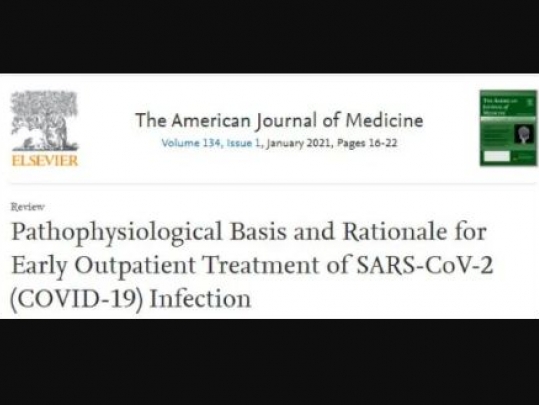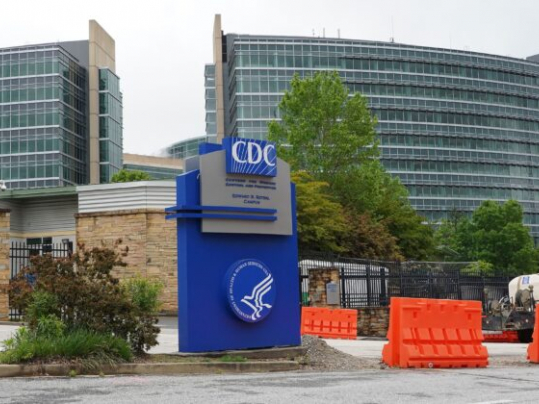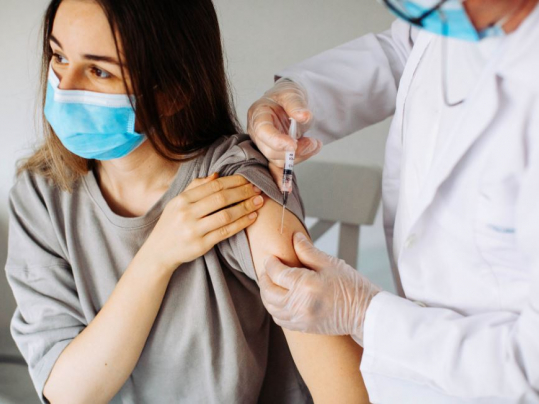The American Journal of Medicine Now Recommends HCQ for COVID-19

Approximately 9 months of the severe acute respiratory syndrome coronavius-2 (SARS-CoV-2 [COVID-19]) spreading across the globe has led to widespread COVID-19 acute hospitalizations and death.
This article outlines key pathophysiological principles that relate to the patient with early infection treated at home. Therapeutic approaches based on these principles include 1) reduction of reinoculation, 2) combination antiviral therapy, 3) immunomodulation, 4) antiplatelet/antithrombotic therapy, and 5) administration of oxygen, monitoring, and telemedicine. Future randomized trials testing the principles and agents discussed will undoubtedly refine and clarify their individual roles; however, we emphasize the immediate need for management guidance in the setting of widespread hospital resource consumption, morbidity, and mortality.
Zinc Lozenges And Zinc Sulfate
Zinc is a known inhibitor of coronavirus replication. Clinical trials of zinc lozenges in the common cold have demonstrated modest reductions in the duration and or severity of symptoms.18 By extension, this readily available nontoxic therapy could be deployed at the first signs of COVID-19.19 Zinc lozenges can be administered 5 times a day for up to 5 days and extended if needed if symptoms persist. The amount of elemental zinc lozenges is <25% of that in a single 220-mg zinc sulfate daily tablet. This dose of zinc sulfate has been effectively used in combination with antimalarials in early treatment of high-risk outpatients with COVID-19.20
Antimalarials
Hydroxychloroquine (HCQ) is an antimalarial/anti-inflammatory drug that impairs endosomal transfer of virions within human cells. HCQ is also a zinc ionophore that conveys zinc intracellularly to block the SARS-CoV-2 RNA-dependent RNA polymerase, which is the core enzyme of the virus replication.21 The currently completed retrospective studies and randomized trials have generally shown these findings: 1) when started late in the hospital course and for short durations of time, antimalarials appear to be ineffective, 2) when started earlier in the hospital course, for progressively longer durations and in outpatients, antimalarials may reduce the progression of disease, prevent hospitalization, and are associated with reduced mortality.22, 23, 24, 25 In a retrospective inpatient study of 2541 patients hospitalized with COVID-19, therapy associated with an adjusted reduction in mortality was HCQ alone (hazard ratio [HR] = 0.34, 95% confidence interval [CI] 0.25-0.46, P <0.001) and HCQ with azithromycin (HR = 0.29, 95% CI 0.22-0.40, P <0.001).23 HCQ was approved by the US Food and Drug Administration in 1955, has been used by hundreds of millions of people worldwide since then, is sold over the counter in many countries, and has a well-characterized safety profile that should not raise undue alarm.25,26 Although asymptomatic QT prolongation is a well-recognized and infrequent (<1%) complication of HCQ, it is possible that in the setting of acute illness symptomatic arrhythmias could develop. Data safety and monitoring boards have not declared safety concerns in any clinical trial published to date. Rare patients with a personal or family history of prolonged QT syndrome and those on additional QT prolonging, contraindicated drugs (eg, dofetilide, sotalol) should be treated with caution and a plan to monitor the QTc in the ambulatory setting. A typical HCQ regimen is 200 mg bid for 5 days and extended to 30 days for continued symptoms. A minimal sufficient dose of HCQ should be used, because in excessive doses the drug can interfere with early immune response to the virus.
Azithromycin
Azithromycin is a commonly used macrolide antibiotic that has antiviral properties mainly attributed to reduced endosomal transfer of virions as well as established anti-inflammatory effects.27 It has been commonly used in COVID-19 studies initially based on French reports demonstrating markedly reduced durations of viral shedding, fewer hospitalizations, and reduced mortality combination with HCQ as compared to those untreated.28,29 In the large inpatient study (n = 2451) discussed previously, those who received azithromycin alone had an adjusted HR for mortality of 1.05, 95% CI 0.68-1.62, and P = 0.83.23 The combination of HCQ and azithromycin has been used as standard of care in other contexts as a standard of care in more than 300,000 older adults with multiple comorbidities.30 This agent is well-tolerated and like HCQ can prolong the QTc in <1% of patients. The same safety precautions for HCQ listed previously could be extended to azithromycin with or without HCQ. Azithromycin provides additional coverage of bacterial upper respiratory pathogens that could potentially play a role in concurrent or secondary infection. Thus, this agent can serve as a safety net for patients with COVID-19 against clinical failure of the bacterial component of community-acquired pneumonia.31,32 The same safety precautions for HCQ could be extended to azithromycin with or without HCQ. Because both HCQ and azithromycin have small but potentially additive risks of QTc prolongation, patients with known or suspected arrhythmias or taking contraindicated medications or should have more thorough workup (eg, review of baseline electrocardiogram, imaging studies, etc.) before receiving these 2 together. One of many dosing schemes is 250 mg po bid for 5 days and may extend to 30 days for persistent symptoms or evidence of bacterial superinfection.
Read the full study at www.sciencedirect.com
- Source : The American Journal of Medicine


















